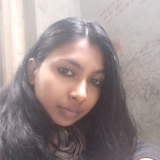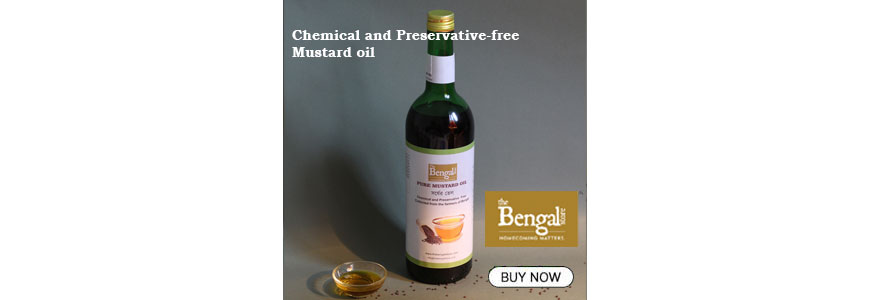Gramophone Records, a big hit at Guddu Bhai’s seven decades old shop
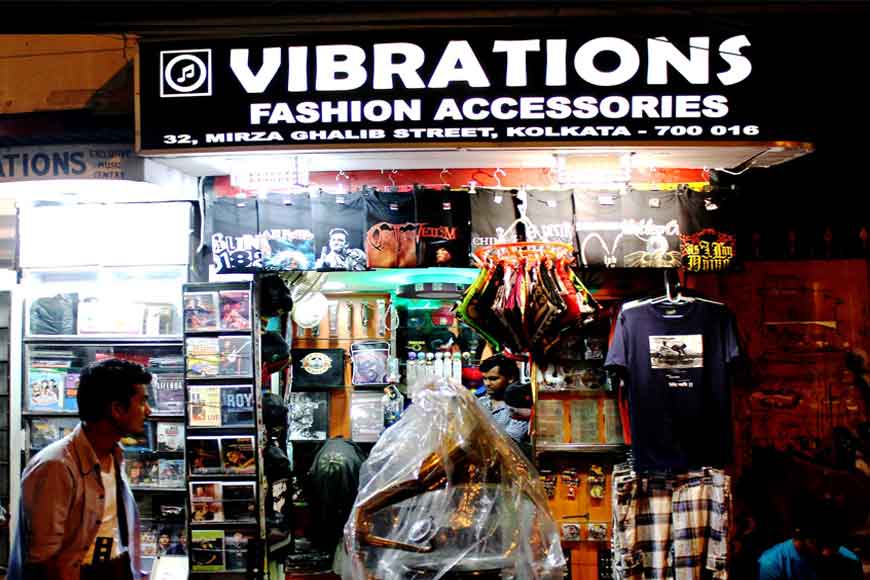
Even if Gramophone is said to have been first patented in 1887 by Emile Berliner and mass-production of records started, it is interesting to note that within two years of Berliner’s discovery, ‘Koler Gaan’, as gramophone is known in Bengali, took a gigantic leap from the West, crossing continent to land on the shores of Calcutta, that happened to be ‘the second city of the British Empire’ (after London).
In 1879, Samuel Haraden first displayed a phonogram at Town Hall, the venue of the annual convention of the Mohammedan Literary Society Calcutta. In 1888, Father Eugene Lafont, a teacher of St Xavier’s College, bought a phonogram. Scientist Jagadish Chandra Bose installed a phonogram soon after in 1891 in his laboratory in Presidency College. Rabindranath Tagore’s songs were recorded and played on this device. Towards the fag end of 1894 when Swami Vivekananda was touring extensively in US, he bought a phonogram as gift for his benefactor, the Maharajah of Khetri and informed the monarch in a letter from the US.
Gramophone’s conquests in India continued unhindered and its fan base increased phenomenally. Songs of legendary artistes like Abdul Karim Khan of Kirana Gharana, Pyara Sahib, Gauhar Jaan and ‘Chappan Chhuri’ Janki Bai were recorded and the records sold like hot cakes. In May 1899, a booklet containing ‘Hindustani Records” was published.
By 1896, phonogram had entered the Tagore household in Jorasanko and finds mention in the very first meeting of ‘Khamkheyali Sabha,’ an informal club where Tagore and his friends would mingle and feast over delicious delicacies and dialogue.
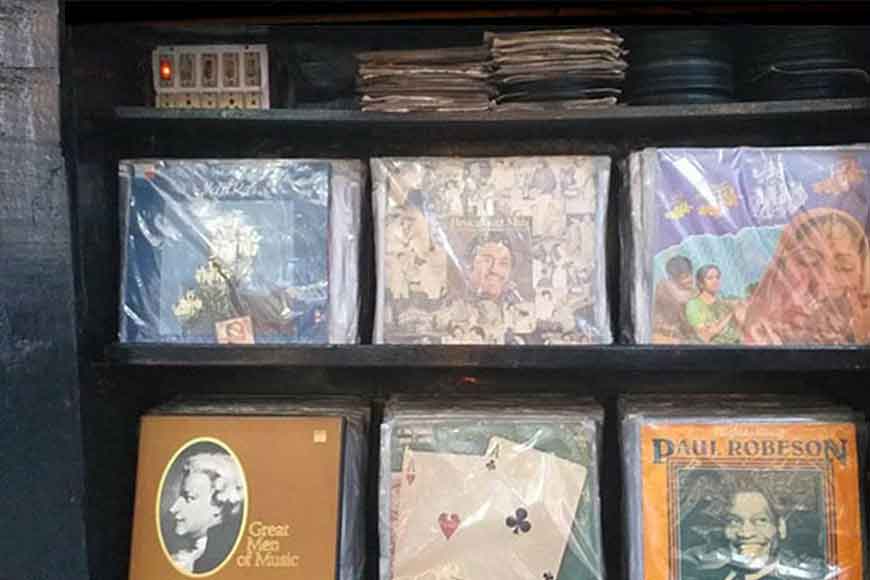
Gramophone’s conquests in India continued unhindered and its fan base increased phenomenally. Songs of legendary artistes like Abdul Karim Khan of Kirana Gharana, Pyara Sahib, Gauhar Jaan and ‘Chappan Chhuri’ Janki Bai were recorded and the records sold like hot cakes. In May 1899, a booklet containing ‘Hindustani Records” was published. Frederick William Gaisberg, an American musician, recording engineer and one of the earliest classical music producers for the gramophone, produced 44 Indian classical music and recitation records in Hindi, Arabian, and Persian, Urdu and Gurmukhi languages but none in Bengali. The albums contained songs on episodes from the Ramayan, Holi and Raas and Guru Nanak’s ‘Doha’ and poems of Hafeez and Mirza Ghalib. Ghalib had been to Calcutta and spent a few years in the city. In his book, Safar-e-Kalkattah, he has eulogized the city as the very best in the world.
Founded in the 1940s, the seven-decade-old shop is now supervised by Mohammed Shah Nawaz aka Guddu Bhai. His countenance brightens up and he becomes nostalgic when he chats of the ‘golden era’ of gramophone records.
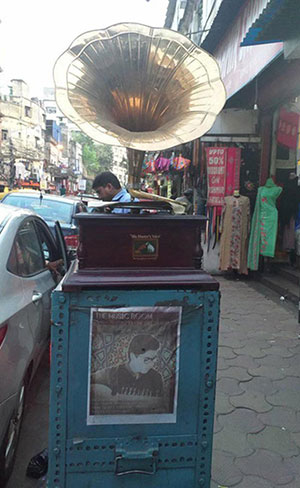 Gone are those glorious days and now Mirza Ghalib’s name is synonymous with a world within a world, a zone trapped in time-wrap. Mirza Ghalib Street, formerly known as Free School Street, joins Surendranath Banerjee Road (S.N. Banerjee Road aka Jaanbazar) with Park Street (Park Mansion). A walk down Mirza Ghalib Street will remind one of James Joyce’s Araby,’ where one comes across everything – from quaint embroidery stores, books and music stores, eateries and shops selling knick-knacks like mementos et al. Amid the cacophony, the strains of some evergreen numbers might just transfix you on your trail and lo behold! You stand right in front of Vibrations! If you are a music aficionado, then a casual glance at the shop is bound to put a smile on your face. A squeaky shiny gramophone is placed majestically at the entrance to the shop. Digital music might have taken over the world but nothing can replace vintage vinyl records and the sight is bound to make you nostalgic and take you back to the last century. This shop was a mecca for all musicians and music lovers who frequented this place for ‘treasure hunt.’ Vibrations was once the most reliable shop, renowned for stocking rare and vintage collection of music records and cinema.
Gone are those glorious days and now Mirza Ghalib’s name is synonymous with a world within a world, a zone trapped in time-wrap. Mirza Ghalib Street, formerly known as Free School Street, joins Surendranath Banerjee Road (S.N. Banerjee Road aka Jaanbazar) with Park Street (Park Mansion). A walk down Mirza Ghalib Street will remind one of James Joyce’s Araby,’ where one comes across everything – from quaint embroidery stores, books and music stores, eateries and shops selling knick-knacks like mementos et al. Amid the cacophony, the strains of some evergreen numbers might just transfix you on your trail and lo behold! You stand right in front of Vibrations! If you are a music aficionado, then a casual glance at the shop is bound to put a smile on your face. A squeaky shiny gramophone is placed majestically at the entrance to the shop. Digital music might have taken over the world but nothing can replace vintage vinyl records and the sight is bound to make you nostalgic and take you back to the last century. This shop was a mecca for all musicians and music lovers who frequented this place for ‘treasure hunt.’ Vibrations was once the most reliable shop, renowned for stocking rare and vintage collection of music records and cinema.
Founded in the 1940s, the seven-decade-old shop is now supervised by Mohammed Shah Nawaz aka Guddu Bhai. His countenance brightens up and he becomes nostalgic when he chats of the ‘golden era’ of gramophone records. His grandfather had set up the shop and later his father took over. In the 1960s, the craze for vinyl started increasing, and that’s when the shop began to stock up on first-rate records. Vibrations then not only started attracting local customers, but also visiting foreigners.
Guddu Bhai says with pride, “I would watch music stalwarts like Suman (Chattopadhyay aka Kabir Suman), Anjan Dutta, Nachiketa (Chakraborty) and many other well-known musicians came to our shop to buy records.
Guddu Bhai still remembers how he often insisted to accompany his father to the shop. The calming strains of music in the shop and the din outside would have an intoxicating effect on young Guddu. In those days, his father would be so busy attending to customers that he would have to skip his meals often.
He says with pride, “I would watch music stalwarts like Suman (Chattopadhyay aka Kabir Suman), Anjan Dutta, Nachiketa (Chakraborty) and many other well-known musicians came to our shop to buy records. We were the only shop to stock records of rare rock music concerts. My father also had an enviable collection of world cinema including noir films by Bergman, Fellini, Truffaut, Godard, Kiarostami, Kurosawa, Ilmaj Gune and a host of other greats.”
In the 1980s, the era of cassettes and audio tapes took over, so they included these as well and started stocking audio tapes as well. But by the time, Guddu Bhai took over, the global music scene transformed phenomenally. New technologies are evolving every other day and listening to music in the digital era is a completely different ball-game from the conventional modes. This led to a temporary slump in demand.
Times have changed but, as Guddu Bhai insists, there are people who still find it immensely satisfying to listen to music on record players and he says he still has a regular stream of clients who drop in to look for vintage records. His collection includes a potpourri of genres like classic rock, Western classical music, country, folk, jazz, Indian classics and even Bollywood film songs. Moving with the times, Guddu Bhai introduced merchandise including toys, T-shirts, backpacks, costumes, jewelry, artwork, mugs, games, books, car accessories, holiday ornaments, and all sorts of other cool collectibles and marvelous memorabilia from popular flicks and they are in great demand...He is a content man, happy to live and recollect those days of yore in his quaint little shop.







